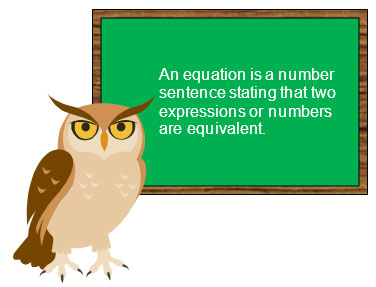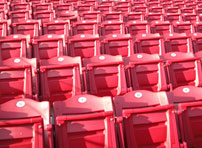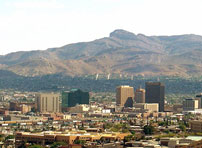

In the previous section, you identified operations that were being represented in different problem situations. In this section, you will apply what you just learned about operations from problem situations in order to write equations that represent the problem.
![]() Use the interactive below to construct an equation that represents the problem situation shown. Click and drag the tile representing the number, variable, or operation to the appropriate slot. Click the Submit button to check your answer or the Reset button to reset the interactive.
Use the interactive below to construct an equation that represents the problem situation shown. Click and drag the tile representing the number, variable, or operation to the appropriate slot. Click the Submit button to check your answer or the Reset button to reset the interactive.
Tyrell earns $15.87 per hour as a law clerk. His gross pay one week was $555.45. How many hours, h, did Tyrell work that week?
![]() Use the interactive below to construct an equation that represents the problem situation shown. Click and drag the tile representing the number, variable, or operation to the appropriate slot. Click the Submit button to check your answer or the Reset button to reset the interactive.
Use the interactive below to construct an equation that represents the problem situation shown. Click and drag the tile representing the number, variable, or operation to the appropriate slot. Click the Submit button to check your answer or the Reset button to reset the interactive.
Ms. Kelley has one jar with 2 3 over 4 3 4 pints of blue paint. She wants to fill a jar that holds 8 pints. How much more paint, p, will Ms. Kelley need?
![]() Use the interactive below to construct an equation that represents the problem situation shown. Click and drag the tile representing the number, variable, or operation to the appropriate slot. Click the Submit button to check your answer or the Reset button to reset the interactive.
Use the interactive below to construct an equation that represents the problem situation shown. Click and drag the tile representing the number, variable, or operation to the appropriate slot. Click the Submit button to check your answer or the Reset button to reset the interactive.
A shipping crate contains 12 identical boxes of linking-block toys. The weight of the contents of the shipping crate is 25.4 pounds. What is the weight, w, of each box of linking-block toys?
Use your completed equations from the interactives to answer the questions that follow.
Interactive popup. Assistance may be required.
Look at the actions being performed. Using a rate and the quantity in the denominator of the rate generates a multiplication situation. Combining two quantities generates an addition situation. Evenly distributing one quantity into another generates a division situation.
Interactive popup. Assistance may be required.
Multiplication deals with creating a large group from two different quantities, such as an area model, or repeatedly adding the same number. Division deals with partitioning a large group equally into smaller groups or with repeated subtraction. When working with rates, multiplication is used when the rate is applied to a quantity in the denominator of the rate and division is used when the rate is applied to a quantity in the numerator of the rate.
In the previous section, you identified operations required to solve a problem using only numbers. In this section, you used operations, numbers, and variables to write equations. For example, consider the field trip problem from the previous section.
108 students will take a field trip on vans that each hold 8 students. How many vans are needed? |
108 students will take a field trip on vans that each hold 8 students. How many vans, v, are needed? |
|
108 ÷ 8 = 13.5 14 vans are needed. |
8 × v = 108 |
Why might it seem that the operations used to write equations are the inverse of the operations that you used to solve word problems?
Write an equation that represents each of the following situations.
Interactive popup. Assistance may be required.
What action is being done to the price of the shoes and the amount of sales tax Adam paid?

Source: Stadium Seats, Matt Turner, Flickr
Interactive popup. Assistance may be required.
There are 15 rows and there are the same number of seats in each row. What operation does this ordered arrangement suggest?
Interactive popup. Assistance may be required.
The two driving distances are being compared, and you are given the difference between the 189 miles driven by Mr. Jackson and the number of miles driven by Ms. Martinez. What operation does this suggest?

Source: El Paso Skyline 2, smguy101, Wikimedia Commons
Interactive popup. Assistance may be required.
The formula d = rt relates distance, rate, and time. What information are you given in the problem that you could substitute into the formula to write an equation to solve for t?